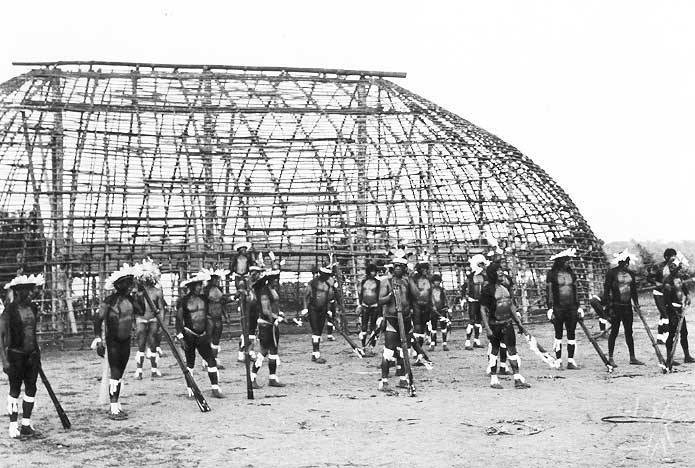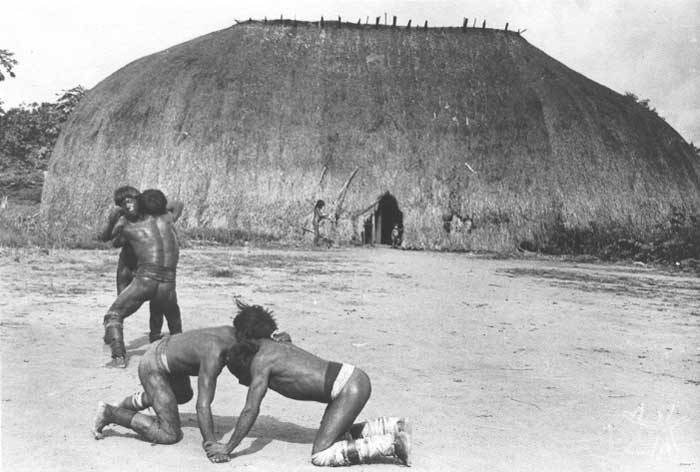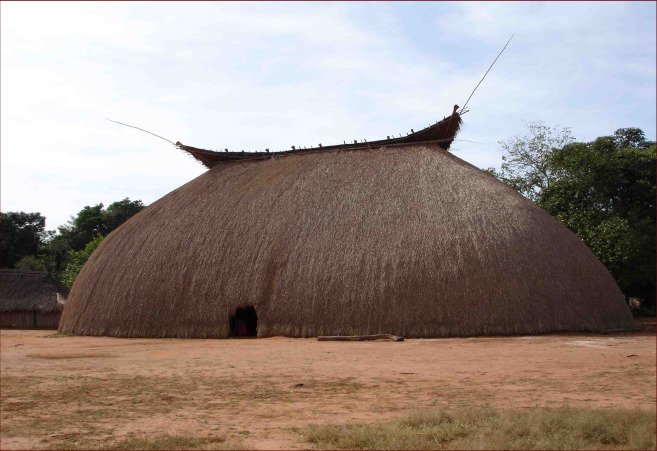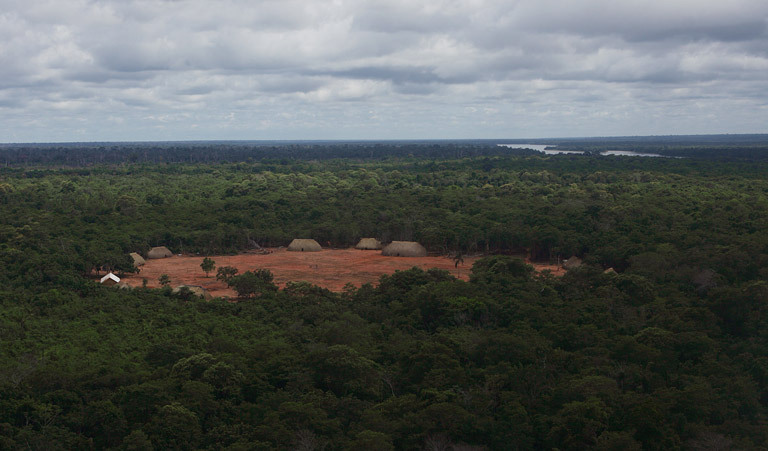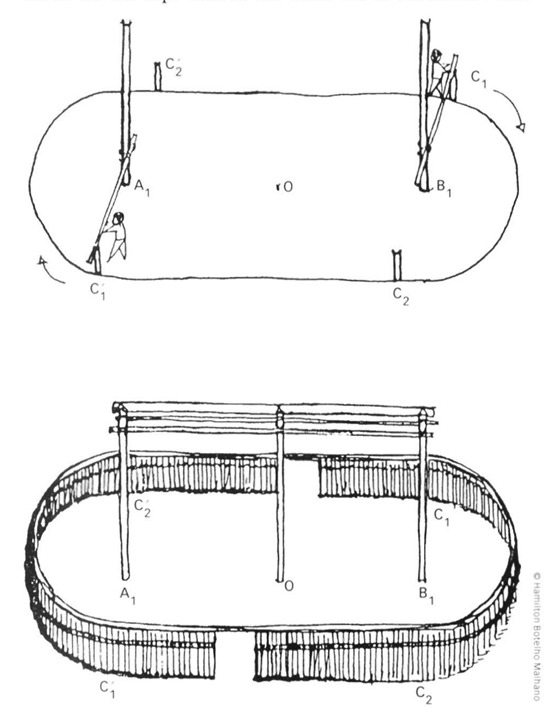V 08 |
Xingu maloca |
type |
|
place |
|
population |
Along the banks of the river Xingu the natives live in gigantic, hall-like huts which are 30-40 metres long, 15-16 metres wide, 9m high. The Aweti, the Kalapalo, the Yavalapiti and 13 other tribes live, thanks to the Villas-Boas brothers, on the territory of the Xingu reserve (Parque Indígena do Xingu). These tribes speak different languages and have separate identities but trade, marry and celebrate festivals together. They all live similar lives of agriculture, fishing, hunting and foraging, as well as residing in similar circular villages. Wooden framed houses roofed with palm leaves are built in a circle around a clearing. A man who decides to build a new hut will, together with his brothers and relatives, build a maloca over the space of half a year. The builders will then move in with their families, up to thirty of them.
The windowless huts have two doors placed almost opposite each other, one facing a common courtyard and the other facing the forest. Inside, close to the doors where a little light can penetrate they work together, and in the middle of the hut the women cook together. The families cluster their hammocks around their own fireplaces. The space is basically communal but there are more private spaces for adolescents, families with babies or recent widows.
A maloca lasts about 15 years and its successor will be built in a nearby new village. The move is necessary not only due to the hut wearing out, but also the soil becoming degraded.
